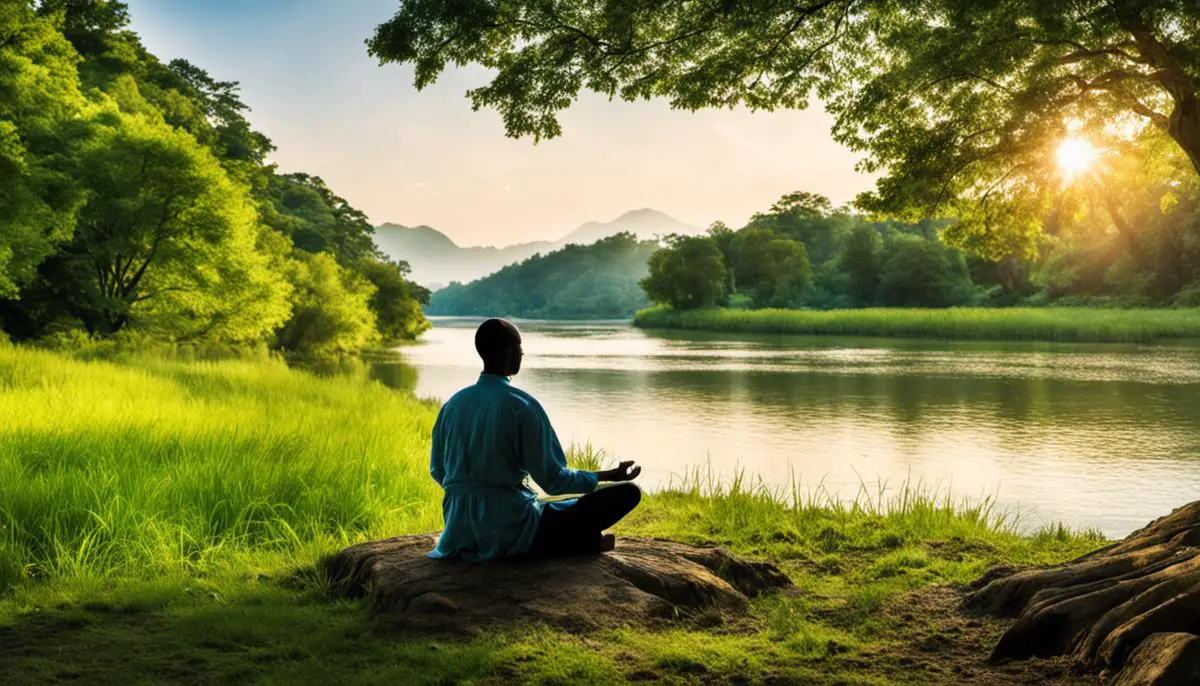Grounding oneself amidst the ceaseless currents of life often feels elusive, yet our natural world has ceaselessly provided sanctuary for countless generations. At the intersection of nature and spirituality, we find a connection woven by the threads of our shared human experience. It is an exploration into the depths of our spiritual identities, a reflection on the sanctuary that nature provides, and an exercise in how we engage with the world around us. This journey leads us from the intricate fabric of individual spirituality to the magnificence of nature as a collective spiritual space, allowing for a deep exploration of the practices that bridge these realms and the sacred places that inspire awe across cultures. Also center stage, is our powerful role as stewards of the earth, inspired by an ecological spirituality that ignites a passionate desire to preserve our natural world.
Understanding Spirituality
Understanding Spirituality and Religion
Before delving into the concept of spirituality, it is crucial to distinguish it from religion. Religion refers to a structured set of beliefs, practices, and rituals about a deity or deities, often involving a code of ethics, while spirituality is more about personal growth and understanding of the self and others. Spirituality is not as defined; it is a personal search for meaning, often promoting peace, acceptance, unity, and balance. Unlike religion, spirituality can also extend to connections beyond humans to include nature and the cosmos.
Forms of Spirituality
There are numerous forms of spirituality you can delve into, each offering a unique perspective. One commonly practiced form is Paganism, which typically involves a reverence for nature. Followers believe that everything in the universe, from humans to plants and the earth itself, has a spirit. Another form, Animism, is similar; it regards every element in nature, including trees, rivers, and mountains, as having a spiritual essence. Lastly, Pantheism considers the entire universe as a divine entity, explaining that God is not a separate being, but a part of everything around us.
Spiritual Connection with Nature
Nature has long been associated with spirituality. For some, connecting with nature can provide a window to the divine, inspire profound introspection, encourage mindfulness, and promote feelings of unity with the environment. This connection can be found in activities such as gardening, hiking, bird watching, or simply walking in a park. By observing nature, one can experience the interconnectedness of all living things, the transient nature of life, and the cyclical patterns of existence.
-

Celestial Soul Eco-Friendly Tote Bag
$18.50 Select options This product has multiple variants. The options may be chosen on the product page -

Celestial Soul Women’s T-Shirt
Price range: $20.00 through $21.50 Select options This product has multiple variants. The options may be chosen on the product page
Meditation and Mindfulness
Meditation and mindfulness are key practices in strengthening one’s spiritual bond with nature. At its core, meditation encourages focus, inner calm, and heightened awareness of our thoughts and surroundings. Meditating outdoors can deepen your connection to nature by enabling you to focus on the natural elements, such as the sound of wind in the trees, the rhythm of ocean waves, or the chirping of birds. Similarly, the practice of mindfulness encourages the same kind of awareness in everyday life. By focusing your attention on the present moment, you can develop a deep appreciation for the natural beauty that surrounds you, fostering a spiritual connection with the environment.
Engaging with Nature-Based Spirituality
Diverse nature-based spiritual practices aid in fostering a profound connection with the natural world. Take forest bathing for example, a Japanese tradition that urges individuals to submerge themselves in the calming environment of a forest, deeply inhaling the verdant air; it is believed to bolster well-being, self-assurance, and a spiritual bond with nature. In a similar vein, gardening presents an opportunity for tactile engagement with nature, its patterns and maturation, reflecting an individual’s spiritual growth. Further, shamanic rituals such as animal totem meditation, pave the way for individuals to interact with the energies of animal spirits believed to impart wisdom and healing.
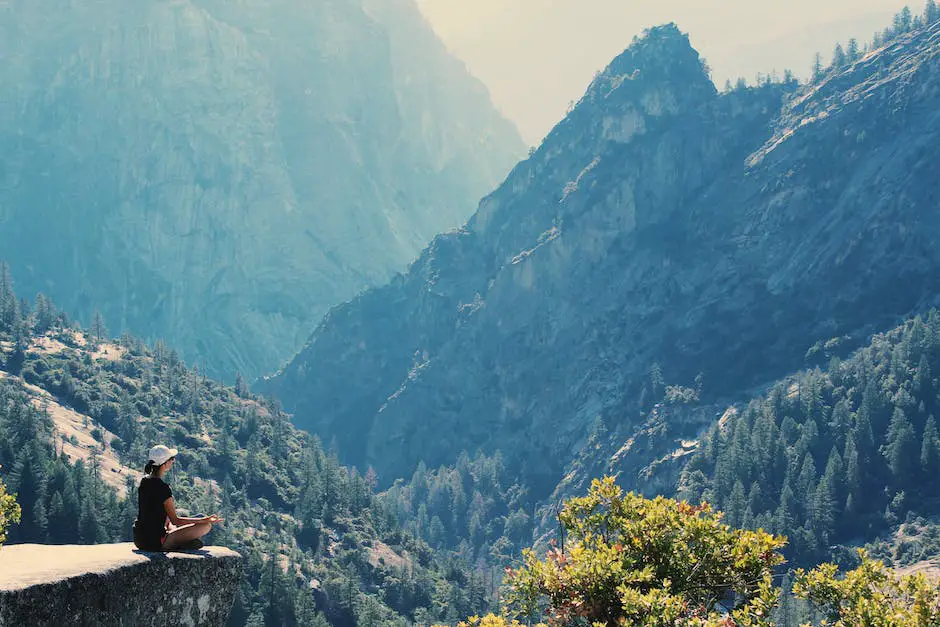
Nature as a Spiritual Space
Unveiling the Natural World as a Spiritual Sphere: A Glimpse Through the Lens of Culture and History
From time immemorial, across a multitude of cultures and beliefs, the natural environment has been revered as hallowed, exhibiting spiritual potency. Indigenous societies like the Native Americans, and the Australian Aborigines, hold that every aspect of nature has an incumbent spirit and commands regard. Their philosophies typically underscore a mutualistic relationship with nature and the emphasis on sustaining ecological balance. Akin to this, the ancients such as the Egyptians, and Druidic clans venerated the significance of the earth, the waters, and the celestial expanse in their spiritual observances. These historical perspectives underscore the deep-seated bond between nature and spirituality, a relationship that has manifested in varied forms across ages and cultures.
Engaging with Nature for Spiritual Benefits
Engaging with nature can have significant spiritual benefits. Nature serves as a pillar of tranquility and a conduit for reflection. In a world constantly occupied by digital devices and artificial environments, spending time in nature provides an opportunity to disconnect from the distractions of daily life and reconnect with the self and the universe at large. The natural environment—with its serene landscapes, rhythmic sounds, and changing seasons—provides a rich and dynamic backdrop for introspection and meditation. Walking through a forest, sitting by a flowing river, or simply being in the presence of plants can help one cultivate a sense of peace and spiritual enlightenment.
Nature as a Place for Connection and Spiritual Renewal
Nature not only nourishes the individual spirit – it fosters collective spirituality as well. It serves as a setting for communal ceremonies and festivals, uniting people through shared spiritual experiences. Harvest, solstice, and equinox rituals, for example, are often held in accordance with the rhythms of nature. In addition, many cultures and faiths undertake pilgrimages to sacred natural sites, seeing them as gateways to the divine.
Nature also provides opportunities for spiritual renewal. Immersed in the sights, sounds, and textures of the natural world, one can find strength to surmount life’s challenges and the clarity to comprehend its mysteries. As the cycle of seasons unfolds from birth in spring to death in winter, and resurrection anew, it offers a powerful metaphor for personal and spiritual evolution. As the leaves fall and the new buds sprout, the continuous cycle of life and death creates a sense of awe and reverence, fostering spiritual growth.
Unifying Spirituality and Nature
In today’s world, a resurgent appreciation for the union of spirituality and nature is clearly visible, particularly as the urgency of environmental issues escalate. An increasing number of people are finding solace in nature-centric spiritual practices. This trend doesn’t just satisfy individuals’ spiritual needs but also acknowledges our collective responsibility towards our home, Earth. Reflecting on this deep-rooted wisdom that considers Earth as a sacred entity, we understand that fostering a close spiritual relationship with nature is not merely a soul-filling exercise but also a vital condition for ecological sustainability and the survival of future generations.
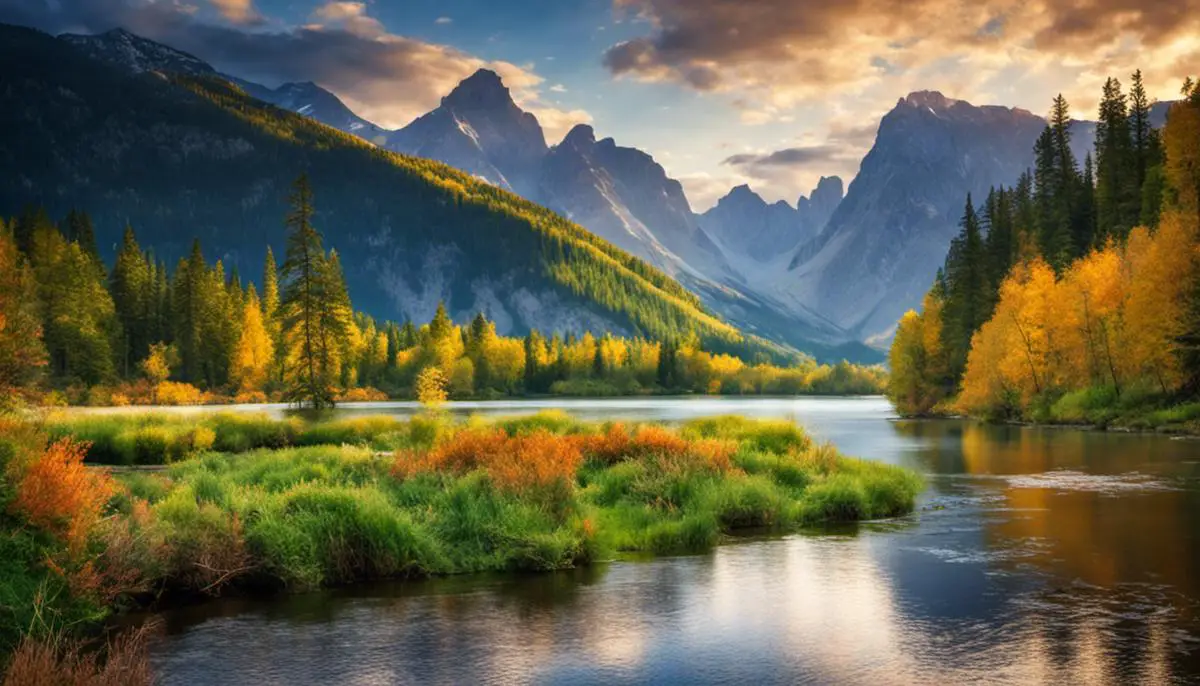
Practices for Connecting with Nature
Nature as a Mirror to Spirituality
The fusion of spirituality and nature can be traced back to ancient times and is acknowledged universally. Different cultures and religions from around the globe have consistently deemed nature as an awe-inspiring source of life, growth, death, and rebirth. They perceive it as a viable medium to establish a spiritual connection with the divine, with oneself, and everything in existence. To delve deeper into this mystical relationship, we can engage in a plethora of practices and activities that nurture this spiritual affinity with nature.
Forest Bathing
Forest bathing or Shinrin-Yoku originated from Japan and it relies on the healing power of the forest. Engaging in this practice requires quiet contemplation amidst nature and using all the senses to establish a deeper connection with the surroundings. This deliberate immersion acts as a bridge to absorb the protective and uplifting energies that the forest has to offer, leading to mental clarity and relaxation.
Yoga and Meditation
Yoga and meditation are ancient practices that align the mind, body, and spirit. Conducting yoga or meditation in a natural setting, such as a park, beach, or forest, emphasizes the serene and harmonious qualities of nature. The flow of poses in yoga harmonizes the body with the natural rhythms of the universe. Similarly, meditation, which instructs concentrating on breath and fostering mindfulness, helps in achieving internal peace and connecting with all living entities.
Gardening
Gardening can serve as a grounding activity to connect with nature on a regular basis. It hones patience and mindfulness as one tends to each plant and nurtures it from seed to bloom. The repetitive tasks in gardening, like sowing, watering, weeding, and pruning, has a meditative effect that can ease stress and enhance focus. Building this bond with plants and the soil evokes a sense of accomplishment and responsibility towards the environment.
Hiking
Hiking offers an opportunity of adventure and exploration in the wilderness. The physical challenges of the journey, such as crossing rough terrains, steep slopes, or rapid streams, puts one directly in touch with the earth’s elements. The quiet moments of solitude during a hike facilitate the realization of one’s smallness in comparison to the vast universe. This sense of humility is a crucial spiritual lesson that reinforces our interconnectedness with nature.
Vision Quests
Vision quests, inspired by Indigenous traditions, regard nature as a spiritual guide and teacher. This practice generally involves a solitary period in the wilderness to fast and meditate, often for several days. The purpose is to seek personal growth, guidance, or the answer to a question through spiritual visions and heightened intuition imparted by nature. It requires immense patience and endurance, but the outcome can potentially be transformative and enlightening.
Immersing oneself in practices that emphasize a deeper connection with nature and spirituality enriches our understanding of our own existence and its relationship to the wider world of nature and the cosmos. This bond with nature, when nurtured with respect and without over-exploitation, acknowledges the spiritual essence within every living entity. Cultivating this spiritual bond is not just personally rewarding; it also encourages more sustainable and harmonious interactions with our environment.
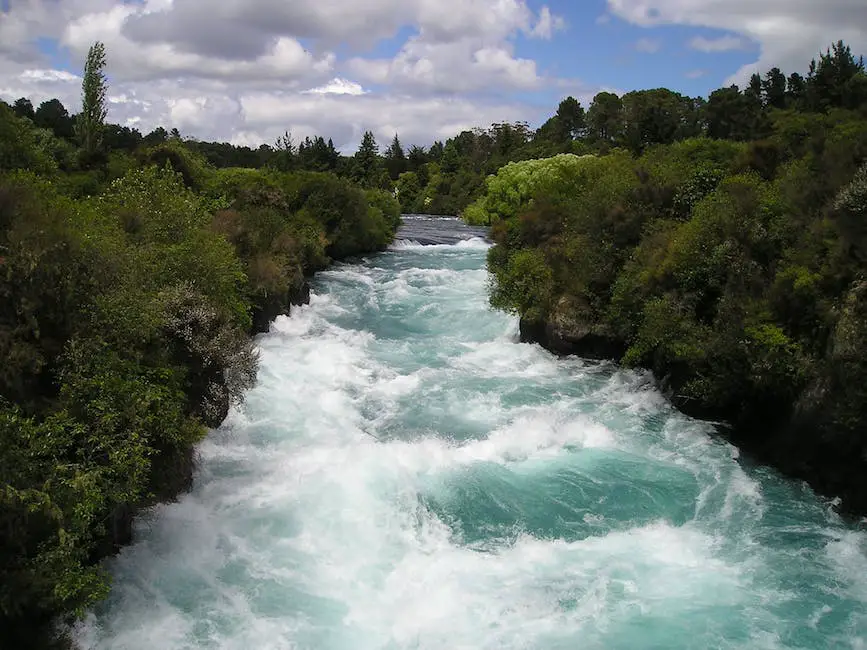
Sacred Places in Nature
Spiritual Significance in Nature: Mount Kailash, Tibet
As an example of remarkable natural sites infused with spirituality, consider Mount Kailash in Tibet. This majestic peak is revered by a number of religions, including Buddhism, Hinduism, Jainism, and Bon. It is not just its breathtaking natural beauty that attracts believers, but its profound spiritual significance. Many regard Mount Kailash as the very center of the universe or ‘axis mundi’, the point where heaven and earth converge. Devotees from these faith regimes take on strenuous pilgrimages to this sacred site, often journeying around the mountain in a ritual known as a kora. Despite the high altitude and harsh weather, these faithful persevere as they view this journey as a pathway to spiritual purification and enlightenment.
Uluru, Australia: Nature and Divine Creation
Uluru, also known as Ayers Rock, is a massive sandstone monolith in the heart of Australia’s Northern Territory. The indigenous Anangu people consider Uluru as a sacred place with deep spiritual significance. They believe that their ancestral beings created natural features, including Uluru, during the Dreamtime, a mythical period of creation. Each crevice, cave, and formation around the rock tells a story from the Dreamtime, making it a living cultural landscape and a place of spiritual power and transformation.
The Spiritual Wonder of Yosemite National Park, USA
In the United States, Yosemite National Park is a bastion of natural beauty that has also held spiritual significance for a number of Native American tribes, such as the Miwok and Paiute tribes. They considered the park’s stunning landscapes – its valleys, mountains, waterfalls, and immense sequoias – as sacred. The tribe members performed various rituals and ceremonies there to maintain a spiritual connection with the land. Today, the park’s immense beauty continues to invoke a sense of wonder and spiritual connection in millions of visitors each year.
Mauna Kea, Hawaii: A Natural Astral Observatory
One of the most highly venerated sites in Polynesian culture is Mauna Kea in Hawaii. For the native Hawaiians, this dormant volcano is much more than a geographical feature; it’s a sacred place that connects them to the cosmos. The mountain’s high altitude and dry environment make it an excellent place for stargazing, and the native Hawaiians considered it as the region where the earth touches the heavens, a meeting point between the spiritual and physical realm. Today, Mauna Kea remains a site of religious rituals and practices, highlighting the ancient Hawaiians’ profound spiritual connection to nature.
Sacred Groves of Osun, Nigeria: Reverence for Nature Spirits
In Nigeria, the Sacred Groves of Osun is a significant spiritual and ecological site. Devoted to the Yoruba goddess of love and fertility, Osun, the grove is a dense forest on the outskirts of the city of Osogbo. Sacred groves were once common across Yorubaland, but the Osun grove is the only remaining one. The sculptures and shrines scattered around the grove are dedicated to various Yoruba deities and are seen as embodiments of the spirits themselves. The lush greenery and the meandering Osun river lend a serene aura to the area, reinforcing the spiritual essence, prompting believers to respect nature and its preservation.
The majestic natural landmarks sprinkled around our planet are not just picturesque spectacles; they’re deeply ingrained in the spiritual fabric of numerous cultures worldwide. Their importance reaches beyond their awe-inspiring physical attributes, extending to their perceived spiritual energetics, a testament to the intricate bond between nature and spirituality.

Ecological Spirituality: Fostering a Love for Our Planet
Integrating Nature and Spirituality: The Ecological Spirituality Concept
Bridging the world of physical environment and the abstract realm of spiritual well-being is the notion of ecological spirituality. This belief system views Earth’s environment as a wellspring of profound spiritual wisdom and insights. It strongly encourages both, the respect for our planet, and the nurturing of its diverse, inter-connected organisms, highlighting the vital link between our personal tranquility and the wellness of our vibrant, living world.
The Spiritual Aspect of Environmental Conservation
A deeper engagement with the preservation of our environment brings with it an elevated sense of spiritual consciousness. The simple act of planting a tree, for instance, translates to more than just an environmentally-conscious gesture; it is a spiritual symbol of growth, renewal, and endurance. Then, understanding the cyclical nature of water—from rainfall percolating through the soil into the water table, only to evaporate and replenish the clouds—can boost our spiritual insight about life cycles and continuity.
Connecting with Nature
A profound connection with nature enables us to experience deeply fulfilling spiritual moments. Observing the harmony between diverse species living within the same ecosystem can teach us about co-existence and interdependence. Moments of solitude amidst an untamed forest can spark insights into our life purpose and the ephemerality of our worldly concerns. The experience of feeling the vibrations of a hummingbird’s wings or the comforting warmth of sun on skin can raise our awareness about the spectrum of sensory experiences we often take for granted.
Leading a Greener Lifestyle
Inspired by ecological spirituality, we can take steps to lead a greener, more sustainable life. The decisions can range from adopting a plant-based diet to reduce greenhouse emissions, to consciously limiting our consumption to alleviate pressure on the Earth’s resources. Investing in renewable energy sources or adopting composting and recycling habits are equally effective ways to actively participate in environmental conservation practices.
Environmental Activism and Spirituality
In ecological spirituality, activism finds a bedfellow in contemplation. Recognizing the spirituality inherent in nature inspires us to engage in proactive steps towards environmental conservation, far beyond limited personal gains. The activism can take various forms, from attempts to halt deforestation and destruction of natural habitats to advocating for policies that address climate change and preserve biodiversity.
The Reciprocal Relationship
Ecological spirituality proposes a reciprocal relationship with nature; we tend to the Earth as much as it tends to us. As we cultivate our spiritual life through a more profound connection with our natural environs, we are also compelled to preserve and nourish the environment. By pursuing a greener lifestyle, we enrich our spiritual selves and, ultimately, improve our overall quality of life in ways that both respect and enhance the natural world.
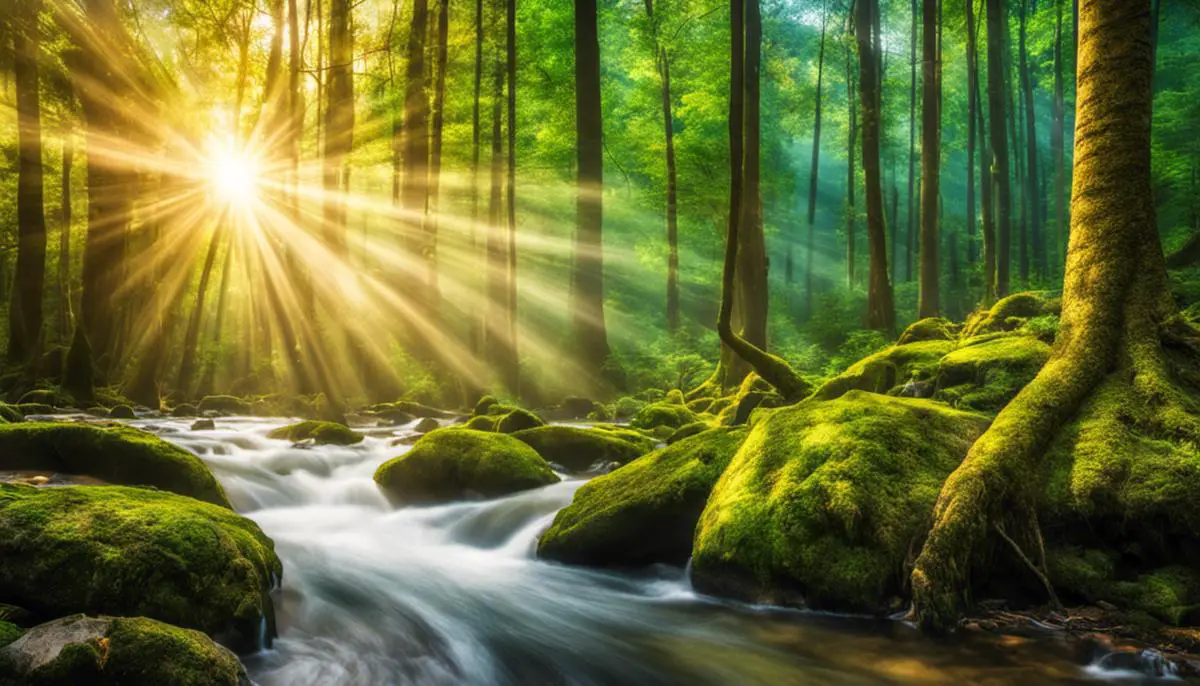
As we traverse the intricate pathways of our spiritual development, guided by the gentle rhythms of nature, an undeniable bond forms. This bond, in its profound significance, transcends cultural and historical boundaries. It fosters a universal respect for our natural world, a reverence that challenges us to reevaluate our roles as custodians of the Earth. Cultivating our spiritual connection with nature does more than merely contribute to our personal wellbeing; it fuels the drive towards a more sustainable lifestyle, ensuring the preservation of this precious planet for generations yet unborn. When we plunge into the depths of our spirituality, and drink deeply from the well of nature, we discover not only the myriad ways in which we are connected but also the responsibility we bear to preserve such a connection.

